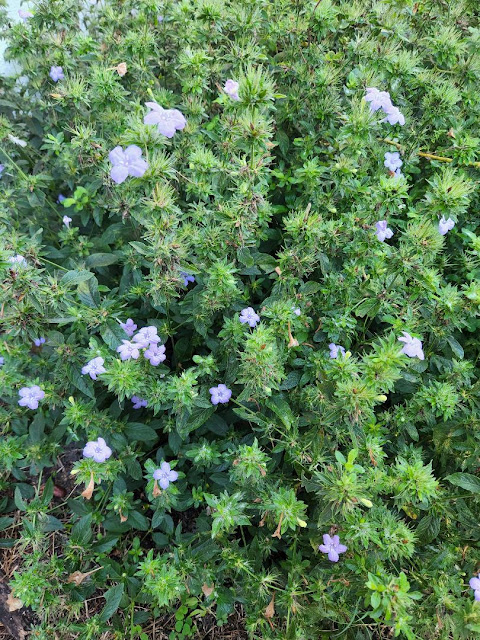Location, Location, Location
Ask nearly every real estate agent and they will tell you that one of the most important features of your home is its location. The same is true about the plants you have in your landscape. In my early years here in Florida, I believed that I knew a great deal about native plants and their functionality in the landscape. After all, I had spent at least two years hanging out with experts, reading books (there wasn't an internet in those days or I would have been all over it), and playing with my plants. Truth is, I actually knew very little. Even today, after 30+ years of doing this, I learn something new all of the time and realize that there is still much more to learn.
One thing I have learned, is that a plant's function in one landscape is not necessarily the same as it is in another. This is what makes it so difficult to advise others on what to plant and why. This was first taught to me when I planted an area of wildflowers at my new office at the Pinellas County Extension Service in Largo. I was busy organizing a new Chapter of the Florida Native Plant Society and I had been recently made the state Education Chair. I was clearly now an "expert" and was eager to educate others as to the value of Florida native plants in creating what I now call "living landscapes."
With the wildflower area planted, I decided to study the use of the various wildflower species by butterflies in an effort to be able to tell others which wildflowers were the most visited by each. It was a simple field study. I enlisted the help of my office assistant and we'd spend about an hour on days we could find the time to record how long each butterfly spent nectaring at the flowers available to them. Ultimately, using very simple statistics, we would be able to determine preferences and thus direct others as to which wildflowers were the most used for each butterfly species that routinely came to our planting.
At the end, it was very clear that the most used wildflower in our mixed planting was wild petunia (Ruellia caroliniensis). Nearly every species of butterfly used it far more than what you'd expect as random. I was hellbent on sharing that information except for one glitch. In my own landscape, only 5 miles away, nearly nothing used this wildflower. Even today, in my new one, wild petunia gets very little use by any of the many pollinators that now stop by. I love the plant, but other wildflowers get far more traffic.
The most important lesson I've learned to date is that context is more important than the simple selection of the plants themselves. What is really useful in one landscape may very likely be far less so in someone else's. I read blog posts from folks extolling the great virtue of pokeweed (Phtyolaca americana) for songbirds such as northern mockingbirds, but absolutely nothing has visited the one growing just outside my fence even though the fruit is ripe. I don't know why, but I do know that the mockingbirds, etc. must have something else that interests them far more in my neighborhood. Beautyberry (Callicarpa americana) also gets very mixed reviews from folks writing about it on the internet. None of this surprises me any more. I learned my lesson nearly 3 decades ago. The best we can do is to plant species with attributes that should provide for the wildlife we are seeking to help, but there is no guarantee that any of these species will function at the level experienced by others. It should, but it may well not.
I write a lot about the importance of diversity and this is partly because of these experiences. A landscape designed around only a few species, no matter how well they are touted by others, will likely never work as well as one that is diverse. My experience with a plant will likely not be yours. The context of our landscapes will differ, even if we are near-neighbors. For this reason, I shy away from telling others what to plant. These choices should be yours - and they are best made after researching the traits of all your possibilities and determining then which plants are the ones most likely to succeed in meeting your desires. Let others guide you some, but make your choices on your own.




I had to smile when I saw this photo - I could post an almost identical picture. What is more interesting, though, is how you describe how a plant can differ in its 'usefulness' in different locations. In the past I have even wondered about the beautyberry bushes in my front and back yards. One seems to be favored by the mockingbirds and the other not so much, judging by how long the fruit lasts on the bush.
ReplyDeleteAs for recommending plants, perhaps a comment like 'this performs like this - for me, in my location' would be a suitable qualifier? And yes, we should try and make our own decisions, but until more people understand that 'yard work' is not 'gardening', in any sense, most of us need experts to point the way, and that includes how to choose suitable plants.
Thank you for your insights.